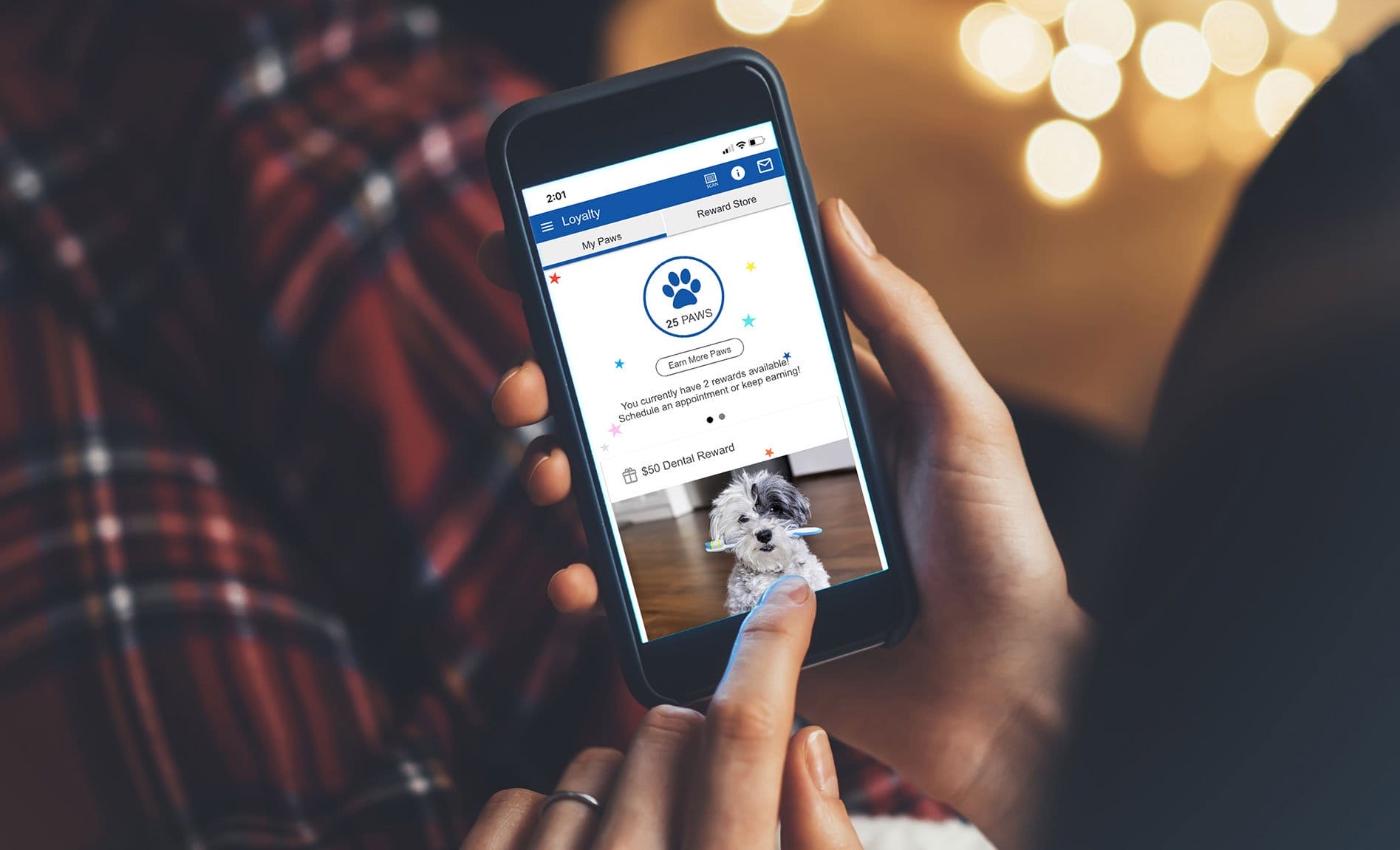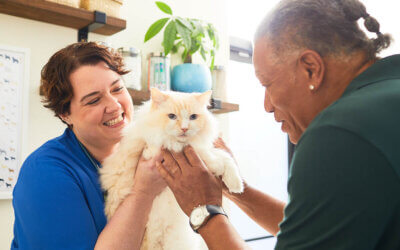This COVID holiday has prompted many people to reach deep to help out their neighbors, exploring new depths of generosity and goodwill during these difficult times. And, since veterinary practices seem to be booming with an overflow of new and existing clients and patients, you have an easy way to give back to your community this holiday season (and beyond!): a loyalty program.
How to win with your loyalty program
Veterinary loyalty programs offer an amazing way to celebrate your clients all year long, but especially at the holidays. Here are 7 tips to building a loyalty program that will set your veterinary practice up for maximum success:
1: Remember your “why”
If you don’t know why you are doing something, you are destined to fail. Make no mistake, the purpose of a loyalty program is simple: appreciation of the clients you have, influencing your clients to choose your practice for all their pet’s needs, and adding a little spice to persuade clients to accept the doctor’s recommendations for their pet. It’s a trifecta win:
- The client wins by unlocking rewards that help them save money.
- The practice wins by driving visits and purchases.
- Most importantly, the patient wins when their owner says yes to the veterinarian’s recommendations.
We all know that if pet owners would only do everything we recommend, their pet would live their best and longest life. It’s our calling as veterinary professionals. The loyalty program helps get you a little bit closer to that end goal.
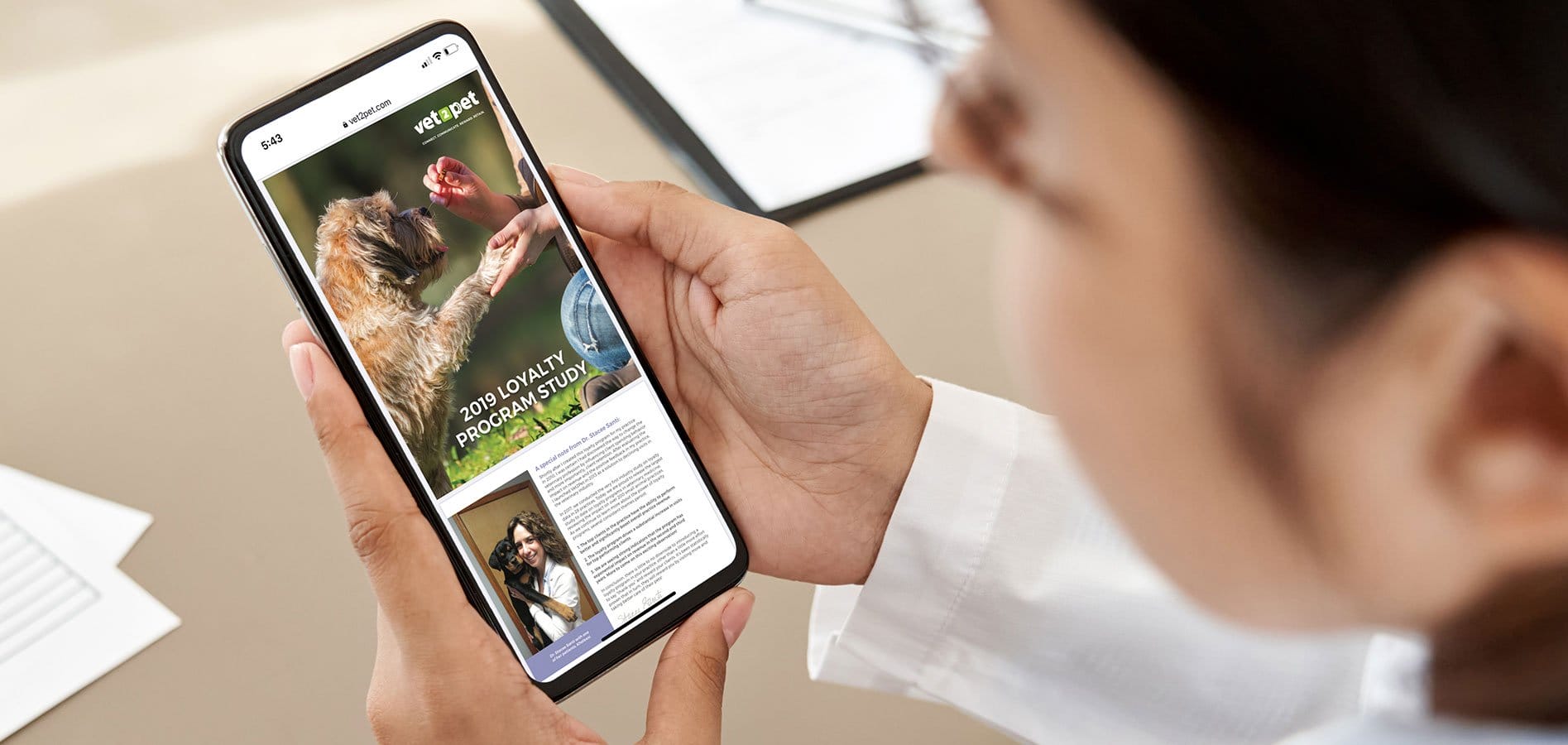
2: Be strategic
It’s imperative that you give strategic thought to setting up your loyalty program, otherwise you will just be creating a fancy discount program. We all know the margin in veterinary medicine can’t support big discounts, especially if you are running under 10% EBIDTA. The key factor here is that all rewards drive more visits, not product purchases. When we drive more visits, we have the potential for higher-level service recommendations, like dental cleanings, lab work, and other important wellness treatments.
One of the biggest mistakes I’ve seen over the years is using your loyalty program to drive more product purchases.
Instead of “Buy 9 bags of food and get the 10th free,” try “Buy 9 bags of food and get a complimentary wellness exam” to drive a larger invoice.
3: Keep it simple
People get scared of new or “difficult” things, and can easily succumb to analysis paralysis and fail to engage. Keep your loyalty program simple to understand and attractive to participate in. In fact, my rule of thumb is that if you can’t explain your loyalty program in less than 30 seconds, it’s probably too complicated, and you should simplify.
4: Be enthusiastic
No matter what, make the most of your loyalty program by bringing enthusiasm and excitement. This means when a client spends a lot of money at the practice and earns a large number of paws at once, make a big deal about it! Congratulate them and give a high-five right there when they see the paws light up on their app’s loyalty card. And be sure to give a big callout every time a reward is redeemed. I might even go so far as to suggest having a bell you ring at the front desk to celebrate. It is your opportunity to say, “Wow! We are so excited for you. This couldn’t happen to a nicer person or cuter pet. It’s one way for us to say we appreciate you.”
5: Change it up
The same old loyalty program can get boring after a while, so spice things up by sending out notifications with new ways to earn a paw every month, or every other month. Your clients will be more invested in reaping rewards if there are novel methods to snatch up those precious paws. Pro tip: Add a bonus loyalty item focused on a wellness initiative, like microchips or the annual heartworm test.
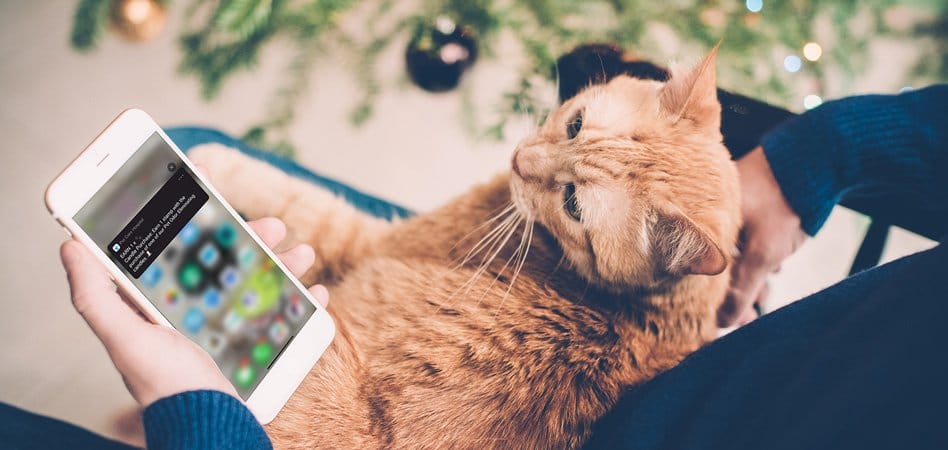
6: Encourage clients to download the app before checkout
The magic will happen at checkout, so ensure your client knows that at the beginning of the visit. Not only will they have an opportunity to browse in the app and learn about other ways to rack up loyalty paws, like refer a friend or giving a review, they will be primed when the time comes to hand over the credit card.
7: Understand the neuroscience
As veterinary professionals, we love the science, so let’s have a look at what exactly is happening and why this will work. Certain things trigger the reward center of the brain to release dopamine and oxytocin. These hormones are responsible for happiness, euphoria, and trust. There are a variety of triggers, such as eating, gambling, drugs, games, sex, and winning a prize. With a loyalty program, we are strategically pairing the activity of paying the invoice with the dopamine boost of having loyalty paws appear in your app, or, if you’re so lucky, getting to claim a reward previously earned during the checkout process.
This is one of the most important points of a loyalty program: the timing.
The paws or rewards need to be delivered within seconds of paying the invoice, otherwise the behavior won’t trigger the endorphin release, and your program will merely be a fancy way of discounting. I strongly advise against automating this because two things will happen:
- Purchases won’t be celebrated at the front desk, let alone discussed, so the client will not likely be influenced to make additional purchases at the time of sale.
- With the current technology integration with apps and practice management software, there is a significant delay in applying the loyalty paws in the app (usually 24 hours), which means there is minimal dopamine surge at the critical time of paying the invoice. In addition, many automated systems can’t detect if the invoice was paid or not, so, if anything, the client is getting rewarded for racking up the invoice instead of paying the invoice.
Top reward paws to consider
Although you can fully customize your loyalty program, here are a few tried-and-true reward paws that work well for most practices:
- 1 paw for every $100 spent per invoice — This reward helps increase ATC (average client transaction) by taking that $495 invoice to over $500 for an extra paw. Plus, it improves patient care by encouraging the purchasing of recommended dental care products, preventives, or supplements.
- 5 paws for referring a friend (to referrer and referee) —Referrals are the best. By encouraging your clients to share the love, you will continue to build a strong client base.
- 3 paws for reviewing the practice — Clients are rewarded for providing feedback on your practice. If their feedback is positive, they will automatically be encouraged to post online.
- 3 paws for purchasing 12 months of prevention — This reward helps battle Chewy and other online vendors, and works well for cats and dogs.
- 1 paw for placing your Rx refill order through the app — Overwhelmed with phone calls during COVID? Reduce phone calls with this reward.
- 1 paw for completing a patient history form prior to arrival — Streamline your operations by offering this reward through automated appointment confirmation messaging with your online check-in forms.
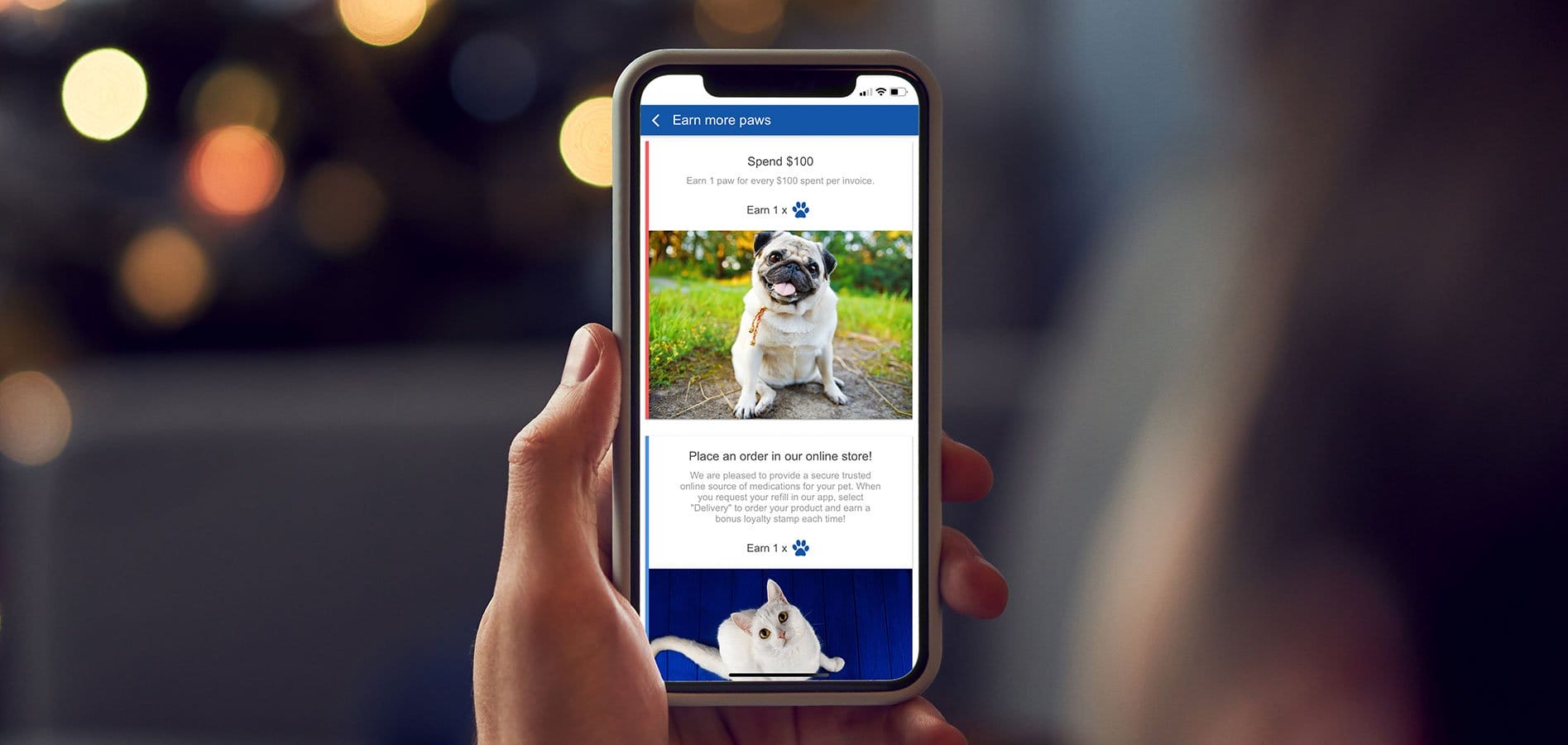
More successful rewards
When choosing rewards, opt for those that drive further service and revenue, except for the ever-popular free nail trim. Here are some winners that practices have great success with:
- $100 credit toward a future purchase (Cost = 20 paws)
- $50 toward a dental cleaning (Cost = 10 paws)
- Complimentary nail trim (Cost = 5 paws)
Avoid loyalty program pitfalls
There are a few pitfalls you need to watch for when building a successful loyalty program, including:
- Reward ≠ free wellness exam — Clients don’t understand the monetary value of a wellness exam. Reward your clients with something that speaks to them: money.
- Don’t make your clients beg — Your clients shouldn’t have to ask for their reward paws. They won’t feel like they’re winning, and will fail to experience that dopamine boost if they have to beg for paws.
- Exclude no one — Don’t forget to reward all your clients, even those without your app.
- Don’t reward on the invoice amount — Instead, reward on the amount paid at time of checkout. No pay, no play. It is important to require full payment of the invoice at the time of checkout to participate in the loyalty program. Otherwise, get ready to open a can of worms from partial payment to the dreaded “I get paid on Friday” promise.
Give back to your community

Since loyalty programs are all about giving and rewarding your clients for being awesome pet owners, get into the holiday spirit with your rewards. Here are a few of my favorites you can add to your reward list to perk up the giving mood all year long:
- Allow clients to round up to your favorite charity to get to the next $100 mark — When your client is faced with that $495 invoice, but can round up to their next reward paw by donating $5 to your local animal shelter, they can’t say no. You can also start your own practice-run charity through the American Veterinary Medical Foundation (AVMF).
- Give paws for client donations — Everyone gets a paw for contributing to Toys for Tots or Coats for Kids, or for donating non-perishable items to the shelter in town.
- Give paws for showing your library card — This is a great way to encourage kids to read and use their local library.
- Give paws for A’s — Support your community’s education by handing out a paw for every “A” on a report card.
- Allow clients to donate their reward to a less fortunate client — You’d be surprised how much use this reward gets, especially around the holiday season when people are in a more giving mood.
A solid loyalty program helps you take care of your existing clients, plus it helps you provide the best in patient care by teaming up with the pet owner and rewarding them for doing well. You can’t go wrong with your loyalty program, unless you make it all about anal glands.
Are you still learning the ins and outs of your hospital app’s loyalty program? Contact our support team at [email protected] for guidance.
Interested in learning how a well-designed loyalty program can increase practice revenue, client compliance, and patient visits? Schedule a demo to learn all about Vet2Pet’s customizable, all-in-one client engagement and communication platform today.
